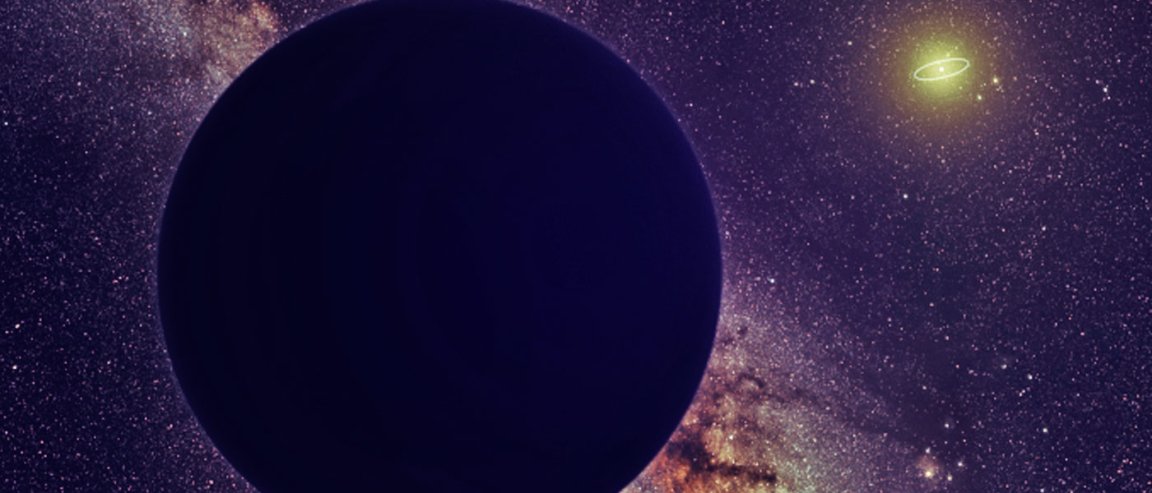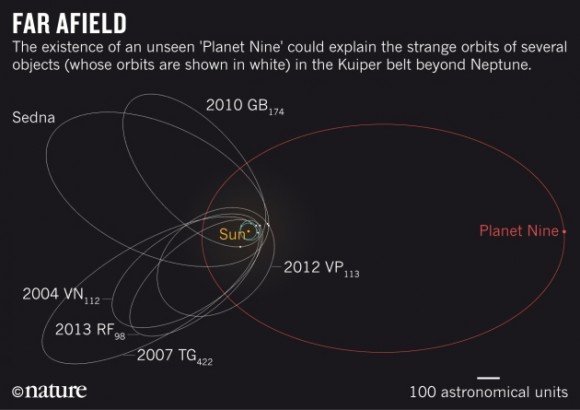
Editor’s note: The article has been updated to correct errors. The text previously stated that the Cassini probe was being impacted by the planet; however, the influence is on Saturn itself, which Cassini is orbiting.
The hunt for Planet Nine just got a whole lot more intense.
Scientists have discovered small perturbations in the Saturn’s orbit, perturbations that can’t be accounted for by the known planetary mathematics of the Solar System.
Cassini is currently orbiting Saturn, and something seems to be tugging at the planet—something big.
Gaining Steam
It began with two planetary scientists: Konstantin Batygin and Mike Brown from the California Institute of Technology. In January, the duo released a paper detailing their belief behind a possible ninth planet in our solar system.
In their paper, they referenced specifically 6 Kuiper Belt objects (KBOs) that were demonstrating strange behaviors when in “contact” with a large object. They seemed to be clustering together while in orbit. Since the Kuiper Belt exists outside of Neptune’s orbit, it was speculated that the icy giant planet may have been responsible.
But the fact is, these 6 KBOs are way too far out of Neptune’s reach. So fingers were pointed at the possible Ninth Planet as the culprit.
Meanwhile, in France, Agnès Fienga and her team at the Côte d’Azur Observatory have been meticulously working on a detailed model of our Solar System. They placed the hypothetical Ninth Planet into their model to see where it would fit best.
What they found was astounding.
The mysterious Ninth Planet is presumed to be 4 times larger than Earth, and 10 times as massive. It takes between 10,000-20,000 years to orbit the Sun. At the end of the day, Planet Nine might be a humongous find, but it’s still nowhere close to us.
Fienga estimated the distance between Earth and the Ninth Planet to be somewhere around 600 astronomical units (AU), or about 90 billion kilometers (56 billion miles). That’s around 15 times the distance to Pluto—but close enough to be a potential candidate in the Cassini perturbations.

SOURCE: Nature/K.Batygin and M.E. Brown
Hidden Data
If Planet Nine exists somewhere in our Solar System, there’s got to be evidence of it in previous data collected over the years. There could be clues to its whereabouts even in current tests being conducted.
For example, astronomers believe that Planet Nine will be found in the constellations of the southern hemisphere. Coincidentally, the southern hemisphere is grounds for the Dark Energy Survey, which aims to find explanations as to why the universe is accelerating in its expansion. Although its prime purpose is not to seek out new planets, it still might be able to.
Also, if this planet exists, it should be emanating heat radiation—enough to be detected. Those studying the Cosmic Microwave Background (CMB) radiation might pick up on these subtleties. “CMB experiments have historically used solar system giant planets to calibrate their instruments, so we know that current and planned CMB experiments are sensitive enough to measure the flux from Planet Nine if it is as bright as we think it is,” stated Nicolas Cowan, an exoplanet astronomer at McGill University in Montreal.
The Search Continues…
Batygin and Brown have announced their next steps. They are hoping for 20 days of observing time at the Subaru Telescope on Mauna Kea, Hawaii. With Fienga’s proposed location, they hope to have a greater chance of finding this hidden giant.
So we’ll just have to see. These are exciting times for outer Solar System astronomy; something very big and very strange is lurking out there…what is it? An ejected giant planet from the chaotic early days of the Solar System? A brown dwarf or stellar remnant (highly unlikely)? Perhaps an alien interloper, stolen from some passing star, or a rogue world snatched from the vast shoals of interstellar space?
Stay tuned to find out.
